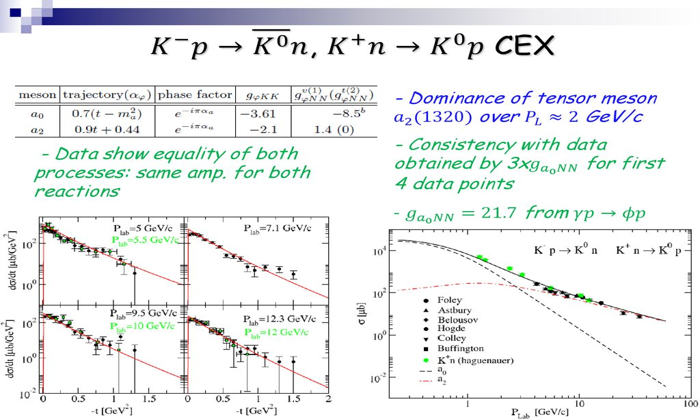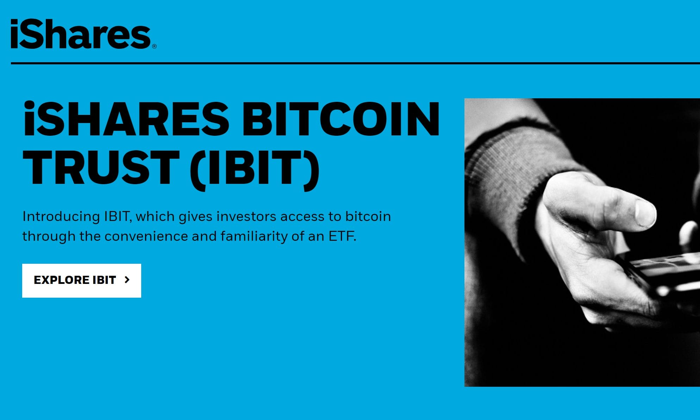CEX dominance in the cryptocurrency market remains unchallenged, even as decentralized exchanges (DEXs) experience notable growth in their trading volumes. Centralized exchanges like Binance and Coinbase are still at the forefront, boasting impressive crypto trading volumes that sustain their leadership position. For instance, Binance recently reported a staggering daily trading volume of around $17 billion, reinforcing its status as a heavyweight in the sector. While DEXs have indeed evolved significantly, capturing approximately 20% of the total trading volume as of early 2024, they still struggle to keep pace with the sheer volume generated by CEXs. This dynamic raises important questions about the future trajectory of crypto trading, prompting speculation on whether DEXs can eventually close the existing gap with central platforms.
The unwavering supremacy of centralized cryptocurrency exchanges (CEXs) poses a crucial topic for discussion in the evolving landscape of digital asset trading. Despite the surge in popularity and efficiency associated with decentralized exchanges (DEXs), major CEX players continue to wield significant influence over trading volumes and market accessibility. The impressive trading activity observed on platforms like Binance further accentuates this trend, where centralized platforms account for much larger volumes compared to their decentralized counterparts. As DEXs strive to carve out a more substantial market share, the ongoing growth they’ve experienced raises interest about potential shifts in user preference and market dynamics. Ultimately, understanding the interplay between centralized and decentralized trading platforms is essential for anticipating the future of the cryptocurrency market.
The Continued Reign of CEX Dominance in Crypto Trading
Centralized exchanges (CEXs) have long held the crown in the cryptocurrency market. Their infrastructure is designed to handle high trading volumes efficiently while providing a user-friendly interface that appeals to both novice and expert traders. Platforms like Binance and Coinbase, with their robust trading engines, have consistently reported staggering figures; for instance, Binance’s daily trading volume, which often reaches around $17 billion, underscores the sheer scale at which these CEXs operate. This capacity not only facilitates a higher liquidity but also attracts more users, creating a formidable barrier for decentralized exchanges (DEXs) to overcome.
The dominance of CEXs is attributed to several factors including regulatory compliance, security measures, and customer support. Centralized exchanges benefit from regulatory approvals that lend them credibility and trustworthiness. Furthermore, the security features implemented by CEXs come as a relief for traders, as many users are particularly concerned about the risks associated with asset loss. In contrast, while DEXs have improved in terms of user experience and security, they still lack the level of assurance that comes with established CEXs, which plays a vital role in trader retention and engagement.
Rapid Growth of DEXs: Bridging the Gap?
Despite the current dominance of CEXs, the decentralized exchange (DEX) sector has witnessed remarkable growth over recent years. As of early 2024, DEXs claimed about 20% of the total trading volume when compared to their centralized counterparts. This growth can be attributed to the increasing popularity of DeFi and the push toward greater user autonomy and privacy in trading. Major DEX players, such as Uniswap, have succeeded in capturing significant market attention by offering unique liquidity options and trading pairs that appeal to users looking for alternatives to the traditional centralized systems.
Nevertheless, the DEX market still faces many hurdles in its quest to compete with CEXs. Key challenges include issues surrounding scalability, transaction speed, and user interface complexities that can hinder a novice trader’s experience. Additionally, the lack of sufficient liquidity on DEX platforms can lead to slippage and higher transaction costs, which are unappealing to many traders who are accustomed to the smooth experience provided by CEXs. The DEX growth trajectory will depend largely on how these platforms evolve to address these challenges, potentially leading to an interesting shift in the trading landscape.
Key Drivers Behind CEX and DEX Market Trends
Understanding the underlying factors driving the market dynamics between centralized and decentralized exchanges is crucial for investors and traders. CEXs benefit from advanced trading features, regulatory support, and well-established security protocols, making them preferred choices for high-volume traders. Conversely, the rise of DEXs has been propelled by an increasing demand for transparency, lower fees, and enhanced control over personal assets. Many traders are enticed by the idea of non-custodial trading that DEXs offer, as they allow users to retain full control over their funds.
Furthermore, events such as regulatory changes and technological advancements can significantly influence trading volumes. The expansion of blockchain technology and its adoption for various financial services has led to an increase in DEX trading activities. As protocols continue to improve and offer more robust solutions for scalability issues, it is believed that DEXs could capture larger fractions of trading volumes. However, how well these exchanges can innovate and address the inherent disadvantages they face will determine whether they can challenge the existing CEX dominance.
Future Predictions: CEXs vs. DEXs
Looking ahead, the trajectory for both centralized and decentralized exchanges is intriguing. Analysts predict that while CEXs will continue to dominate the crypto trading space in the near term, DEXs have the potential for substantial growth as they overcome current challenges. If DEXs can enhance their user experience, interoperability, and liquidity provisions, they could erode CEX dominance over the long run. Enhanced blockchain technology and more user-friendly platforms may attract a more diverse user base to DEXs, thereby increasing their market share.
Moreover, the evolution of regulatory frameworks in various jurisdictions could also influence this dynamic. As governments worldwide start to establish clearer policies regarding crypto assets, it could pave the way for more institutional involvement in the DEX space. A conducive regulatory environment might drive innovations in DEXs, potentially leading to improved trust levels among traders. Consequently, as the crypto landscape evolves, the co-existence of CEXs and DEXs may define the future of crypto trading.
Regulatory Impacts on CEX and DEX Performance
Regulation plays a pivotal role in the performance and perception of both centralized and decentralized exchanges. CEXs often operate under strict regulatory frameworks, which can bolster investor confidence. This compliance with regulation helps them to build sustainable business models and retain market dominance despite the emergence of DEXs. Given the scale of their operations and the substantial trading volumes they command, CEXs like Binance showcase an ability to adapt to regulatory changes, further solidifying their market position.
On the flip side, the decentralized nature of DEXs makes regulatory compliance a complex challenge. As they operate without a central authority, DEXs often face uncertainty regarding how to navigate regulations. This ambiguity can deter potential users who prioritize security and compliance in trading. However, increasing interest from regulatory bodies in the cryptocurrency space may stimulate innovation within the DEX sector, ultimately leading to frameworks that could empower them to not only grow in volume but also to create a more secure trading environment.
The Importance of User Experience in Trade Platforms
User experience (UX) remains a critical factor in determining the success of both centralized and decentralized exchanges. CEXs typically provide a more polished and intuitive interface for traders, which greatly enhances user satisfaction and engagement. These platforms invest heavily in UX design to streamline the trading process, making it accessible even for newcomers. In an industry where comfort and ease directly correlate with user retention, CEXs have a distinct advantage over DEXs, encouraging many traders to stick with familiar platforms.
Conversely, while many DEXs are advancing in terms of user interface and customer support, they still struggle with complexities that can deter new users. Complicated navigation, lack of educational resources, and slower transaction times are common barriers that DEXs need to address. Overall, improving the user experience will be pivotal for DEXs aiming to capture a larger market share in the competitive crypto landscape, especially as they strive to match the efficiency provided by CEXs.
Innovation as a Catalyst for Competitive Advantage
Innovation is a crucial driver behind the competitive landscape of CEXs and DEXs. Centralized exchanges have relied on continuous feature upgrades such as margin trading, futures, and staking rewards to attract and retain users while also increasing their trading volumes. By adapting to market trends and offering cutting-edge tools, CEXs ensure that they stay relevant in the fast-evolving crypto landscape. Such innovations have allowed them to create additional revenue streams, further entrenching their dominance.
Meanwhile, DEXs are rapidly innovating to make their platforms more competitive. New models such as automated market makers (AMMs) and liquidity mining are reshaping the DEX space, potentially leading to attracting a wider audience. Enhancements in smart contract technology are also contributing to increased security and efficiency in DEX transactions. As DEXs continue to unveil novel solutions that cater to both new and experienced traders, we may start seeing a shift in trading behaviors that could challenge the current CEX dominance.
User Education as a Function of Exchange Type
User education plays a pivotal role in bridging the trading experience offered by CEXs and DEXs. Centralized exchanges often provide extensive support resources, including tutorials, FAQs, and customer service channels, making it easier for users to understand trading dynamics and strategies. This education approach is instrumental for attracting and retaining traders who may be new to cryptocurrency, thereby maintaining high trading volumes on CEXs.
In contrast, DEXs have been slower in offering sufficient educational content, which can leave many potential users feeling overwhelmed. However, there is a growing trend of community-driven education initiatives in the DEX space, with platforms launching their own tutorials and user guides to help demystify decentralized trading. As awareness and knowledge about blockchain technology and cryptocurrency trading increase, DEXs may enhance their appeal and market share, thereby potentially narrowing the gap with centralized exchanges.
Market Sentiment: CEXs vs. DEXs
Market sentiment greatly influences the performance of both centralized and decentralized exchanges. Currently, CEXs are viewed as more reliable due to their established presence and regulatory compliance. This perception significantly contributes to their ongoing market dominance as traders lean toward platforms that they perceive as safe and trustworthy for high-volume trades. Features like instant transaction confirmation and lower latency also amplify the appeal of CEXs, leading to greater user engagement.
For DEXs, sentiment is more polarized. While they are often celebrated for their decentralized nature and the enhanced user control they provide, concerns about security and potential transaction failures can overshadow their advantages. Nevertheless, as more traders become educated about DeFi and its associated benefits, the sentiment surrounding DEXs is gradually shifting toward a more positive outlook. By addressing these concerns and improving overall reliability, DEXs could potentially become the preferred option for a broad audience in the future.
Frequently Asked Questions
What is CEX dominance in the crypto market?
CEX dominance refers to the prevailing market share and trading volumes that centralized exchanges (CEXs) like Binance and Coinbase hold over decentralized exchanges (DEXs). Despite the rapid growth of DEXs, CEXs maintain significant trading volumes and user accessibility, ensuring their strong position in the crypto trading landscape.
How do CEXs like Binance outperform DEXs in trading volumes?
CEXs like Binance outperform DEXs mainly due to their established infrastructure, extensive liquidity, user-friendly interfaces, and a wide array of services that attract a larger user base. For instance, Binance has reported daily trading volumes nearing $17 billion, showcasing an overwhelming advantage over DEXs.
What factors contribute to the continued CEX dominance amidst DEX growth?
Factors contributing to CEX dominance include regulatory compliance, ease of use, faster transaction speeds, and better security features. While DEXs have seen growth, they still struggle with liquidity issues and complex user experiences, making CEXs a preferred choice for many traders.
Is DEX growth challenging the dominance of CEXs?
Though DEX growth has been significant, reaching about 20% of CEX trading volumes as of early 2024, they still face challenges in matching the CEX dominance. Factors such as limited user accessibility and ongoing technological advancements are key areas where DEXs need improvement to challenge CEXs.
Will DEXs eventually bridge the gap with CEXs?
While the rapid growth of DEXs is promising, bridging the gap with CEXs will depend on several factors, including improved user experience, greater liquidity, and more regulatory clarity. As technology evolves and user education increases, DEXs may be able to compete more fiercely with CEX dominance.
What are the implications of CEX dominance for new crypto traders?
For new crypto traders, CEX dominance means they have access to a wide range of trading options, user-friendly platforms, and robust security protocols. However, it also highlights the need for awareness about the potential limitations of centralized exchanges, such as regulatory risks and the loss of control over private keys.
How does the trading volume of Binance compare to decentralized exchanges?
Binance’s trading volume, at approximately $17 billion daily, dwarfs the combined volume of most decentralized exchanges. This stark contrast illustrates the enduring CEX dominance in the crypto market, despite DEXs experiencing notable growth in trading activities.
| Exchange Type | Dominance Status | Daily Trading Volume | Growth Trends | Challenges |
|---|---|---|---|---|
| Centralized Exchanges (CEXs) | Dominant | ~$17 billion (Binance) | Stable volume despite competition | Scaling and maintaining user security |
| Decentralized Exchanges (DEXs) | Growing | Approx. 20% of CEXs | Significant growth since 2020 | Matching volumes with CEXs |
Summary
CEX dominance remains a significant factor in the cryptocurrency market landscape. Despite the admirable growth of DEX volumes, centralized exchanges like Binance and Coinbase continue to lead in trading volume and user engagement. CEXs have shown resilience with astonishing trading activities, while DEXs, although experiencing remarkable growth, still have a long way to go to bridge the gap in volume and accessibility. As the market evolves, it will be interesting to see if DEXs can close the disparity and establish a stronger foothold.
CEX dominance remains a defining feature of the cryptocurrency landscape, even as decentralized exchanges (DEXs) strive to carve out their space in the market. Major centralized exchanges like Binance and Coinbase continue to dominate crypto trading volumes, reflecting their established user bases and robust liquidity. Recent reports indicate that Binance alone boasts a staggering daily trading volume of $17 billion, far eclipsing the numbers seen on many DEXs. While DEX growth has been notable since 2020, with platforms like Uniswap gaining traction, they still account for only about 20% of the trading volume of CEXs by early 2024. This discrepancy raises important questions about the future of crypto trading and whether decentralized platforms can ultimately challenge the entrenched power of their centralized counterparts.
The prevailing landscape of cryptocurrency trading is heavily influenced by the supremacy of centralized trading platforms, often referred to as CEXs. While alternative trading venues such as decentralized exchanges (DEXs) are rapidly gaining popularity, especially in recent years, they still trail behind their centralized rivals in terms of overall trading activity. With leading platforms like Binance showcasing unmatched trading volumes, the contrast between CEX operations and the burgeoning decentralized systems is stark. As we investigate the rising interest in DEXs and their growing market share, it is crucial to understand the dynamics at play and the potential for future market shifts. This exploration will examine whether decentralized mechanisms can ultimately challenge the established order of centralized exchanges.















